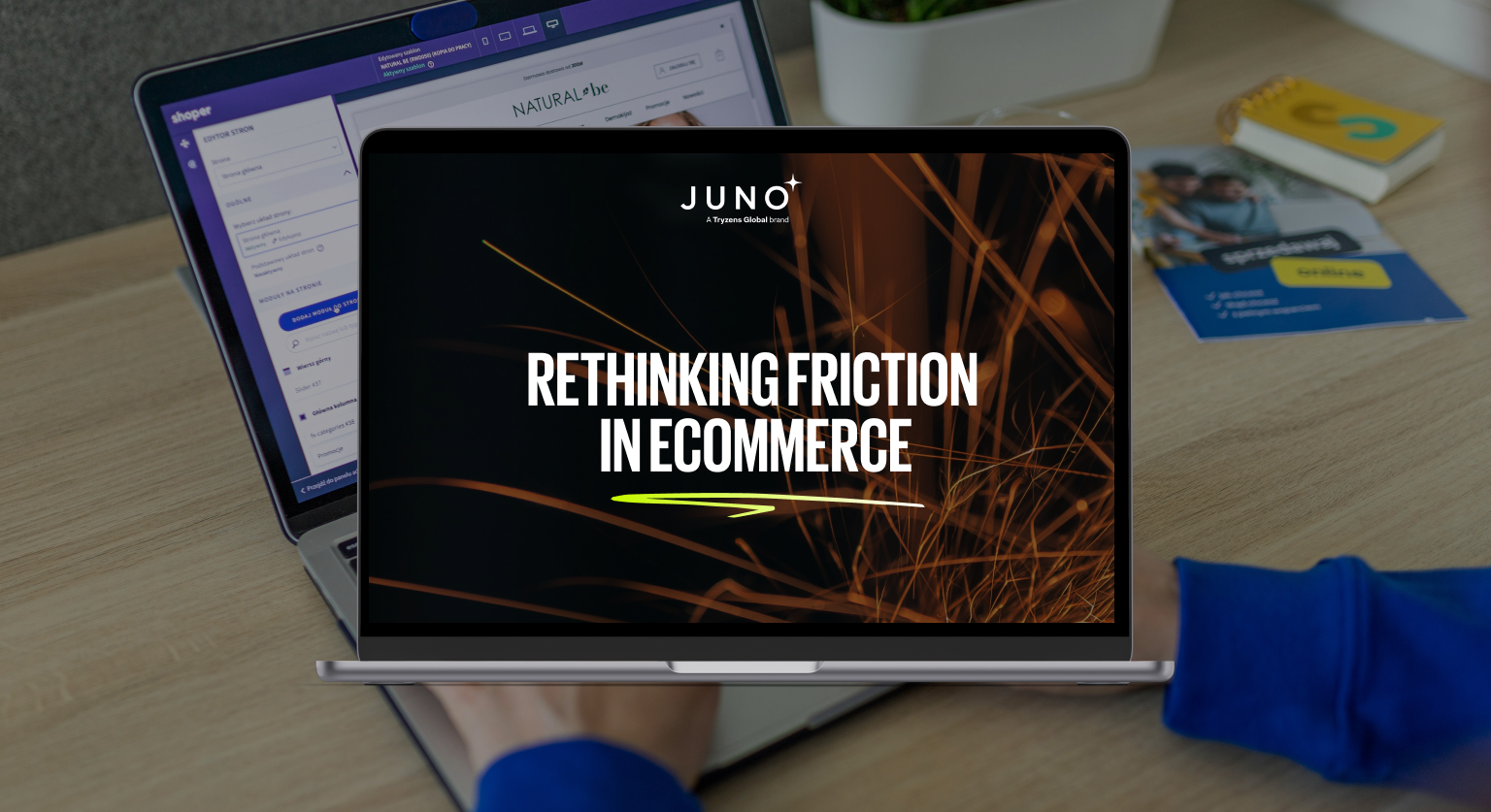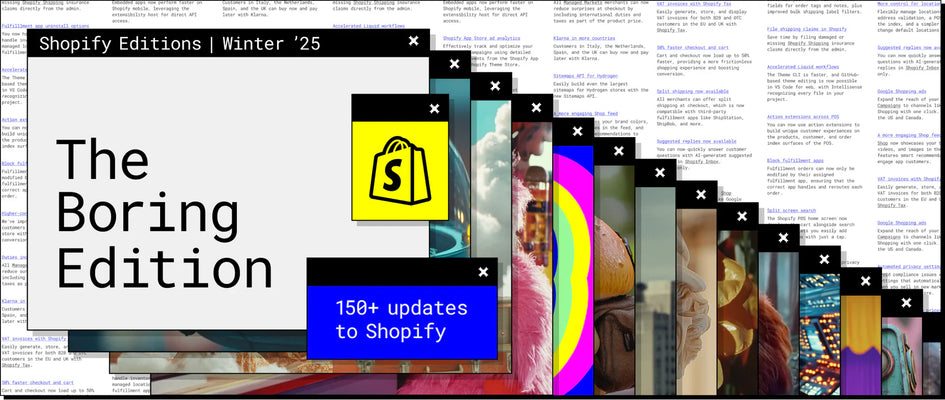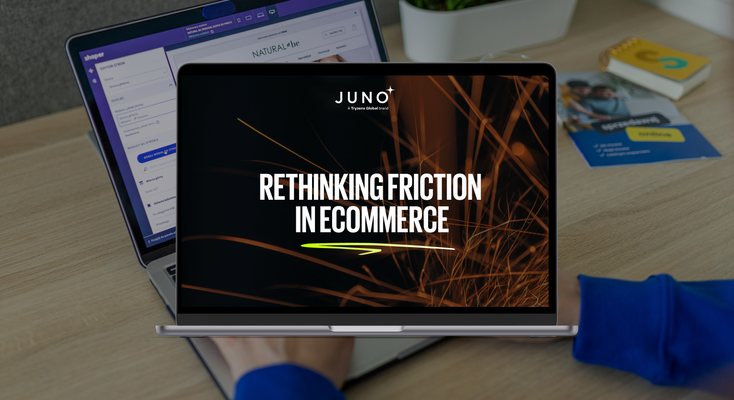Shopify agency award winner, Shopify partner, Shopify experts
Ecommerce Shopify
Rethinking Friction in Ecommerce
By Juno Ecommerce on Nov 14,2024

The Role of Positive Friction in Conversion and Retention
In the race to streamline the online shopping experience, friction has become synonymous with inefficiency. Brands are pouring resources into reducing every obstacle between customers and their purchases.
From minimising clicks and optimising checkout flows to enhancing page load times, the goal has been singular: increase conversion rates by making the path to purchase as smooth as possible.
However, there’s a growing realisation that eliminating all friction may not be the best approach for long-term success. As brands continue to focus on reducing friction to achieve higher conversion rates, they risk overlooking the very element that could help them retain customers: meaningful engagement.
The Relentless Pursuit of Higher Conversion Rates
Over the last few years, Ecommerce brands have been obsessed with one key metric—conversion rates. Globally, Ecommerce conversion rates have averaged around 2% to 3%, with top-performing sites reaching as high as 5%. These benchmarks have driven brands to invest in a wide array of tactics, including optimising calls-to-action, streamlining checkout processes, and leveraging urgency triggers to push customers toward quick purchases.
Yet, despite improvements in conversion rates, many Ecommerce businesses are struggling to scale. Rising customer acquisition costs (CAC) are cutting into profits, and the growing competition has made it harder for brands to differentiate themselves.
The pandemic-fueled Ecommerce surge has given way to a post-COVID slowdown, with global Ecommerce growth dipping from 16% in 2021 to 10% in 2022. Even businesses with above-benchmark conversion rates are finding it increasingly difficult to maintain profitability as their operational costs rise and profit margins shrink.
The Bigger Picture: Conversion Rate Optimisation Alone Isn’t Enough
The core issue is that many businesses have become so focused on conversion rates that they’ve neglected a critical factor: customer retention. Converting a customer is just the first step, but retaining them—building long-term loyalty and increasing their Customer Lifetime Value (CLV)—is where sustainable profitability lies. Without a strong retention strategy, brands are forced to continuously invest in acquiring new customers, leading to a scenario where acquisition costs outweigh the value of those customers over time.
This imbalance between acquisition and retention is unsustainable. For example, if your CAC is £50 but your CLV is only £40, even a high conversion rate won’t be enough to keep your business profitable. You’re essentially paying more to acquire customers than they’re worth, leading to a profit squeeze that no amount of conversion rate optimisation can solve.
The Role of Retention in Profitability
Retention is not just an afterthought; it’s the key to profitability. Data shows that increasing customer retention by just 5% can boost profits by 25% to 95%. Yet many brands focus heavily on acquisition and leave retention strategies—like loyalty programs, discounts, and retargeting campaigns—as an afterthought, kicking in only after the customer has disengaged.
To address this, brands must shift their mindset from "conversion at all costs" to "conversion with retention in mind." This means introducing strategies that engage customers not just at the point of purchase, but throughout their entire journey with the brand.
Reintroducing Friction: The Case for Positive Friction
This brings us to a radical yet essential idea: friction isn’t always bad. In fact, well-placed, purposeful friction can enhance the customer experience, leading to higher satisfaction and long-term loyalty.
Positive friction slows down the buying process just enough to encourage thoughtful, deliberate decisions. This might seem counterintuitive in a world that prizes speed and convenience, but giving customers a moment to reflect on their choices can reduce buyer’s remorse, prevent returns, and foster a deeper connection with the brand.
Here are a few ways positive friction can be used strategically:
- Personalised Recommendations: Offering tailored product recommendations before checkout can give customers a chance to consider complementary items or rethink their selections. This not only enhances their experience but also increases their cart value.
-
Interactive Discounts and Gamification: By introducing small, intentional pauses in the customer journey, Nibble encourages meaningful engagement and interactions. For example, prompting customers to negotiate a discount or add an exclusive item before checkout adds an element of positive friction that invites interaction. These micro-engagements increase purchase consideration, deepen brand connection, and often lead to higher-value orders—all of which contribute to a stronger, long-term relationship with the brand.
- Reviews and Social Proof: Displaying reviews or social proof during the checkout process encourages customers to feel more confident about their purchase, reducing the likelihood of regret or returns.
- Delivery Option Reviews: Asking customers to confirm their delivery options, including shipping speeds and costs, ensures they are making informed choices, ultimately leading to higher satisfaction with the post-purchase experience.
Friction as a Retention Tool
Rather than focusing solely on removing friction to boost conversions, brands should think about how introducing micro-moments of friction can drive retention. When customers are encouraged to engage thoughtfully with your brand, they are more likely to feel connected to it. This connection fosters brand loyalty, making it more likely that they will return for future purchases.
Strategic friction also helps address one of the biggest issues in Ecommerce: customer churn. By slowing down the buying process in meaningful ways—through product recommendations, upselling, or cross-selling options—brands can create a more engaging experience that keeps customers coming back.
Balancing Speed with Meaningful Engagement
The key to successful Ecommerce lies in balancing speed with engagement. While reducing friction is important for improving conversion rates, it shouldn’t come at the cost of long-term customer satisfaction. Brands must recognise that not all friction is bad—if used correctly, it can enhance the shopping experience and build stronger, more loyal customer relationships.
At Juno Ecommerce, we’ve mastered this delicate balance. Our expertise in Conversion Rate Optimisation (CRO), coupled with our focus on Customer Experience (CX) and UX design, enables us to help brands not only increase their conversion rates but also retain their customers for the long haul.
Friction as a Growth Strategy
The relentless pursuit of higher conversion rates may win short-term sales, but it can’t solve the long-term challenges of customer retention and profitability. The brands that will thrive in the future are those that recognise the value of strategic friction—slowing down just enough to create meaningful, engaging experiences that keep customers coming back.
Ultimately, friction isn’t the enemy. Used wisely, it can be the key to transforming one-time buyers into loyal customers, ensuring that your brand grows not just through higher conversion rates, but through higher customer lifetime value as well.
By striking the right balance between speed and engagement, brands can achieve the holy grail of Ecommerce: long-term, sustainable growth.
Ready to talk about how you can achieve sustainable growth? Start the Conversation


